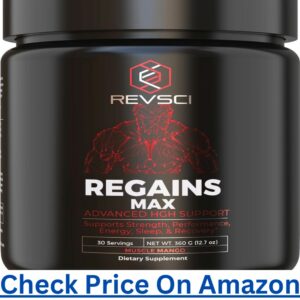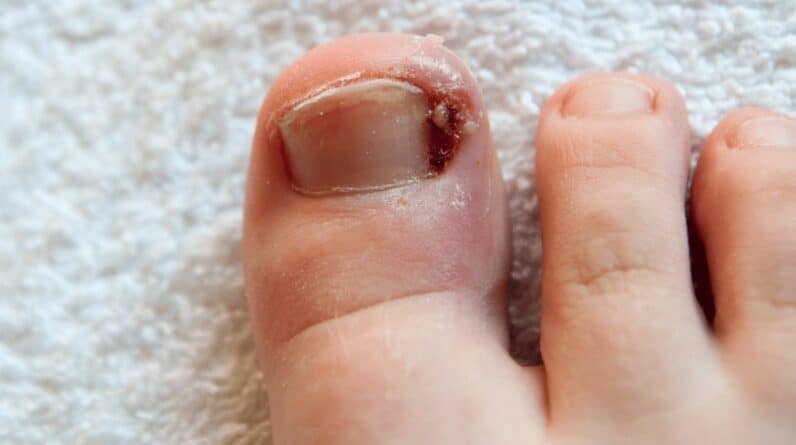As we age, our bodies undergo various changes, one of them being the loss of muscle mass. This can lead to reduced strength, increased frailty, age-related muscle loss, and a decreased quality of life. However, the good news is that muscle loss is not inevitable and can be reversed through science-backed methods. In this article, we delve into the research and uncover the secrets to rebuilding muscle and how to gain muscle mass in older adults.

Dementia Discovery That is Leaving Doctors Speechless (Try This Tonight)
Better than Morphine For Joint Pain… Yet Safer Than Aspirin?
Retire With Freedom. Start Earning Extra Cash Today.
With key insights from studies conducted by top experts in the field, we explore the strategies that have proven to be effective in reversing muscle loss. From targeted exercise routines to proper nutrition and supplementation, we provide actionable tips for older adults looking to improve poor muscle strength and regain their strength and vitality.
Understanding the underlying mechanisms of muscle loss and how our bodies respond to exercise is key to designing an effective muscle-building program. By following the science and incorporating evidence-based practices, anyone can achieve remarkable transformations, going from flab to fab and reclaiming their youthful vigor.
So, if you’re ready to take control of your body and reverse the effects of muscle loss, join us on this journey of discovery and empowerment.
Understanding sarcopenia: What is muscle loss and why does it happen?
Muscle loss, also known as sarcopenia, is a natural part of the aging process. It is characterized by a gradual decline in muscle mass, strength, and function. Sarcopenia affects both men and women, typically starting around the age of 30. However, the rate of muscle loss accelerates after the age of 60.
Several factors contribute to muscle loss. One of the primary causes is a decrease in anabolic hormones, such as testosterone and growth hormone, which play a crucial role in muscle growth and repair and increase the likelihood that you will lose muscle. Additionally, aging is associated with a decrease in protein synthesis, which further contributes to muscle loss.
The impact of muscle loss on aging: How muscle loss affects overall health and quality of life
Muscle loss not only affects our physical appearance but also has a significant impact on our overall health and quality of life. Reduced muscle mass and strength can lead to decreased mobility, increased risk of falls and fractures, and a decline in functional independence. It can also result in a slower metabolism, making it easier to gain weight and harder to lose it.
Furthermore, muscle loss is associated with an increased risk of chronic diseases, such as diabetes, cardiovascular disease, and osteoporosis. These conditions can further exacerbate the decline in muscle mass, creating a vicious cycle that negatively impacts an individual’s well-being.
The science behind muscle reversal: Exploring the mechanisms of muscle growth and regeneration
Understanding the mechanisms of muscle growth and regeneration is key to reversing muscle loss. When we engage in resistance training, such as lifting weights or using resistance bands, it stimulates muscle protein synthesis and triggers the activation of satellite cells. Satellite cells are responsible for muscle repair and growth, leading to an increase in muscle mass and strength.
In addition to resistance training, and endurance training, aerobic exercise, such as walking, swimming, or cycling, also plays a vital role in muscle reversal. Aerobic exercise improves cardiovascular health, increases blood flow to the muscles, enhances oxygen delivery, and helps increase muscle mass all of which contribute to muscle growth and regeneration.
Exercise for muscle reversal: The role of resistance training and aerobic exercise to build muscle mass
When it comes to reversing muscle loss, incorporating both resistance training and aerobic exercise into your routine is essential. Resistance training, such as weight training, strength training, or bodyweight exercises, helps to stimulate muscle growth by causing microscopic damage to the muscle fibers. This damage triggers the body’s repair process, building muscle and resulting in stronger and larger muscles.
In your exercise session aim to perform resistance training exercises at least two to three times a week, targeting all major muscle groups. Start with lighter weights or resistance bands and gradually increase more weight as your strength improves. It’s important to perform each resistance exercise with proper form to minimize the risk of injury and maximize body mass results.
In addition to resistance training, aerobic exercise should also be included in your routine. Adapt exercises engaging in activities such as brisk walking, jogging, or cycling helps to improve cardiovascular fitness, burn calories, and promote overall health. Aim for at least 150 minutes of moderate-intensity aerobic exercise or 75 minutes of vigorous-intensity aerobic exercise per week.
Nutrition for muscle reversal: The importance of protein intake, calorie balance, and nutrient timing
Exercise alone is not enough to reverse muscle loss. Nutrition plays a crucial role in providing the necessary building blocks for muscle growth and repair. Protein, in particular, is essential for muscle synthesis. Aim to consume around 1.2 to 2 grams of protein per kilogram of body weight per day, spread out evenly throughout the day.
In addition to protein, maintaining a calorie balance is important for muscle reversal. Consuming an adequate number of calories ensures that your body has enough energy to support muscle growth and repair. However, it’s important to strike a balance and avoid excessive calorie intake, as it can lead to weight gain and hinder progress.
Nutrient timing is another important factor to consider. Consuming a combination of protein and carbohydrates before and after your workouts can help optimize muscle protein synthesis and replenish glycogen stores, respectively. Aim to consume a protein-rich meal or snack within 30 minutes to an hour after your workout to maximize the benefits.
Supplementing for muscle reversal: Examining the effectiveness of key supplements for muscle growth
While a well-balanced diet should provide most of the nutrients your body needs for muscle reversal, certain supplements can be beneficial. Here are a few key supplements that have shown promise in supporting muscle growth:
– Creatine: Creatine is a naturally occurring compound that helps increase muscle strength and power. It can be particularly beneficial for older adults who may have lower creatine levels.
– Omega-3 fatty acids: Omega-3 fatty acids have anti-inflammatory properties and may aid in muscle recovery and reduce muscle soreness.
– Vitamin D: Vitamin D deficiency is common in older adults and has been linked to muscle weakness. Supplementing with vitamin D may help improve muscle function.
While these supplements can be beneficial, it’s important to consult with a healthcare professional before starting any new supplementation regimen, especially if you have underlying health conditions or are taking medications.
Lifestyle factors for muscle reversal: The role of sleep, stress management, and hormone optimization
In addition to exercise and nutrition, certain lifestyle factors can also impact muscle reversal and your body composition. Adequate sleep is essential for muscle repair and growth. Aim for 7-9 hours of quality sleep each night to allow your body to recover and regenerate.
Stress management is another crucial aspect to consider. Chronic stress can increase the production of cortisol, a hormone that can promote muscle breakdown. Engaging in stress-reducing activities such as meditation, yoga, or deep breathing exercises can help optimize muscle growth.
Furthermore, optimizing hormone levels can also play a role in muscle reversal. Hormones such as testosterone and growth hormone are essential for muscle growth and repair. If you suspect hormonal imbalances, it’s important to consult with a healthcare professional who can help assess your hormone levels and recommend appropriate treatments.
Case studies and success stories: Real-life examples of older adults who have successfully reversed muscle loss
To further illustrate the potential for muscle reversal in older adults, let’s explore some real-life case studies and success stories:
1. John, a 65-year-old man, started a resistance training program and improved his protein intake. Over the course of six months, he gained 5 pounds of muscle and increased his strength significantly. He now enjoys an active lifestyle and feels stronger than ever before.
2. Mary, a 70-year-old woman, incorporated both resistance training and aerobic exercise into her routine. She also focused on consuming protein-rich meals and snacks throughout the day. After a year of consistent effort, she not only regained muscle mass but also experienced improvements in her balance and overall well-being.
These success stories highlight the transformative power of science-backed methods and provide inspiration for older adults looking to reverse muscle loss.
Conclusion: Can Older People Regain Muscle – Empowering older adults to take control of their muscle health
In conclusion, muscle loss in older adults is a common concern, but it is not inevitable. Through targeted exercise routines,physical activity, proper nutrition, supplementation when necessary, and lifestyle adjustments, muscle loss can be reversed, and strength and vitality can be regained.
By understanding the science behind muscle growth and incorporating evidence-based practices into your daily routine, older adults can achieve remarkable transformations, going from flab to fab and reclaiming their youthful vigor. So, if you’re ready to have a positive effect on your body and reverse the effects of muscle loss, start implementing these strategies and embark on a journey of discovery and empowerment today.
Disclaimer: The information in this article is intended for educational and entertainment purposes only and should not be used instead of or contrary to that of a medical professional. Before taking supplements, starting a new diet, or embarking on a new exercise regime please consult a medical or nutritional professional. The owners of “Getting Healthy After 50” are not medical professionals and are simply redistributing information that is freely available on the internet.







